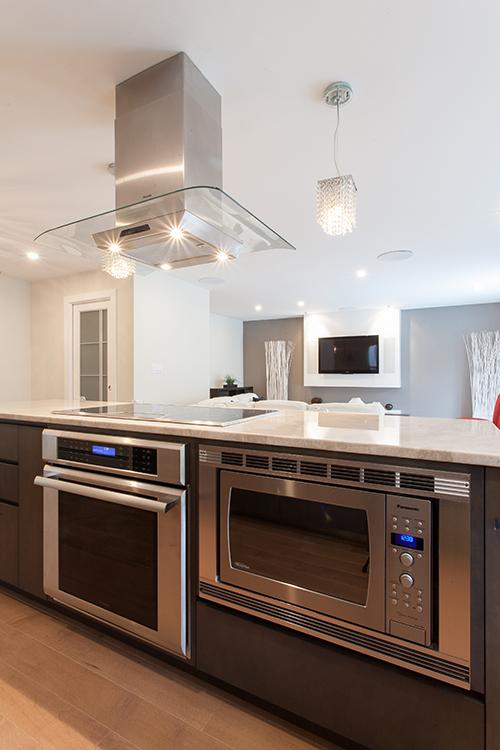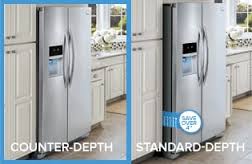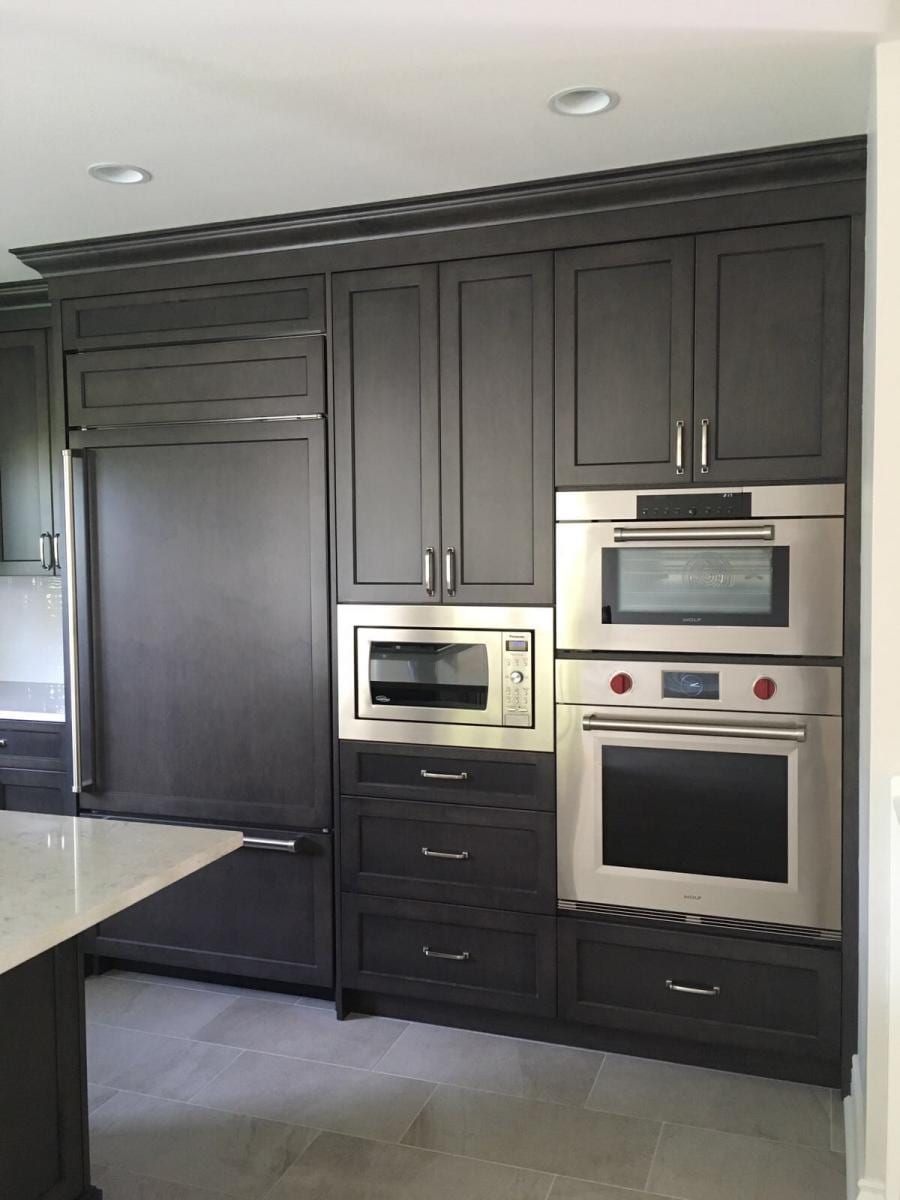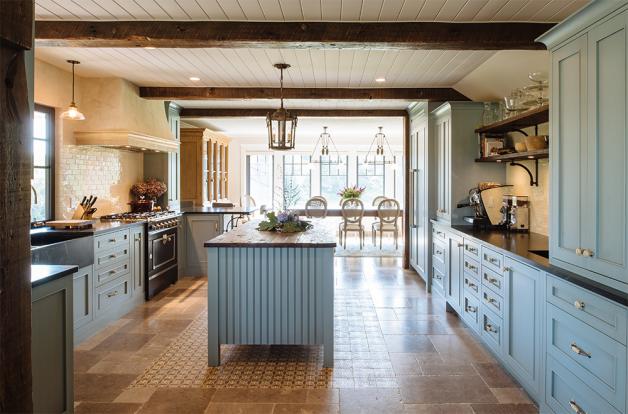
Thank you for following along on our Kitchens 101 series! This post is our third installation in this series with some great tips and suggestions from our designers in choosing appliances for your kitchen.
We will always ask you about how you use your kitchen, which will play into appliance choices. If you entertain larger groups, love to bake, have young children or other potential safety concerns; these are all considerations that will help us to assist you in the decision making process. It’s also worth going to some appliance stores and asking lots of questions. They will be able to provide you with more detailed information and educate you on the latest products available. This will be a great way to gather information so you can decide what will work best for you and your kitchen.
Another consideration to keep in mind when shopping for appliances is energy efficiency. Even though huge strides have been made with more efficient appliances, they are still some of the highest users of energy in our homes. By being aware of energy usage of the individual appliances in your home you can not only be kind to the environment, but can also save on your monthly electrical bills as well. This information on how to use the Energy Guide Label is super helpful.
When it come to finishes, most of our clients choose stainless steel for their appliance finishes. With stainless steel, be sure to talk to the appliance store about ones that are less likely to show fingerprints and are easier to keep clean. Higher end kitchens will often choose a fully integrated panel system, which gives a matching finish to the cabinets for the fridge and dishwasher. This is a great way to give a clean and streamlined look to your kitchen (see photo below!)
Now on to some tips and suggestions for choosing your appliances from Leslie and Vanessa:
Stoves and Ovens:
There are so many choices available when it comes to cooking surfaces, and your cooking lifestyle will be a determining factor in what you choose. Things to consider are some of the extras that can be integrated into the cooking surface such as: built-in griddles, fryers and grills. These are all potential options that are dependent on how and what you cook.
Gas is really the standard for stoves, especially if you like to cook! People often choose gas over electric as it provides instant heat, and generally higher heat as well (which is especially important for some styles of cooking, ie: wok cooking). However, for ovens, most people choose electric as they are considered to have more consistent heat, particularly for baking. Keep in mind the plumbing and electrical requirements, especially if you are choosing dual fuel appliances!
Induction stoves are becoming quite popular as well. One thing to keep in mind for induction cooktops is that your current cookware may not work (Tip: To test, see if a magnet sticks!). The induction cooktop surface does not heat up in the same way as other conventional cooktops, as the heat conducts through the cookware and doesn’t create a super hot surface. It’s a safer alternative that reduces the likelihood of accidental burns, especially with little ones, elderly people, or roaming pets around.
We are receiving less requests for double wall ovens and instead are seeing more clients looking at alternative cooking options like convection microwave ovens and steam ovens. However, if you bake often or host holiday gatherings, a second oven can be very helpful. Also, wall ovens are more easily accessible for inserting and removing items which some homeowners love.
Designer Tip: Consider putting your microwave below your countertop or in a tall cabinet. A drawer style microwave is a great choice if you’re placing it below countertop level as it is easier to access and helps to streamline your upper cabinets. The island tends to be a popular spot for microwaves.
Fridges:
One of the most important aspect of choosing a fridge, even more so than selecting the door type for your new fridge, is choosing whether to do counter-depth or standard-depth. Choosing a counter-depth fridge tends to look nicer as it’s more streamlined, gives you more placement options within your kitchen, and because it’s shallower it generally makes your fridge items more accessible. A standard-depth fridge typically has more space, and if you’re designing your kitchen from scratch, we can work with you to create cabinets that will accomodate the extra depth.
French doors, side-by-side, or full door fridge and freezer are all going to come down to personal preference. Just be sure that you will have sufficient space in your kitchen to open the doors fully so that you will have room to extend the fridge drawers (sometimes wall placement can impact the doors fully opening, which in turn affects whether the drawers can open).
Designer Tip: If you want a water and/or ice dispenser, you will need to ensure that sufficient space is planned for the plumbing, as it can take several inches to accommodate.
Hood Fans:
These are a necessary part of every kitchen, and there are many options for virtually any design aesthetic. The most common choices from our clients are the stainless chimney style hood, particularly for a modern kitchen. For more of a traditional or transitional style kitchen, the popular choice is an enclosed hood with a cabinetry surround.
While you can also choose a downdraft type of fan (mostly used for islands), keep in mind that they take up a lot of cabinet space and are less powerful and effective than a hood fan mounted above your stove. In small kitchens, a microwave hood fan is a great multi-purpose item that is also an efficient use of space.
Dishwashers:
We consider noise levels to be one of the most important consideration when choosing your dishwasher. Nothing can be more distracting than a loud dishwasher, especially in a small space.
If you’re not running your dishwasher regularly (ie you don’t eat at home often, or it’s just one or two of you) you might want to consider a dishwasher with an eco-function, or a smaller drawer-style dishwasher.
If you entertain regularly, or have a larger family, having a second dishwasher in the pantry is a great way to tackle the extra dishes. You will likely also want to look at dishwashers that have a high capacity and an efficient interior layout to fit the maximum amount of dishes.
Some additional features to do your research on are options like temperature controls, adjustable racks, cutlery racks, air-drying options, soil sensors, rinse/hold cycles, wash zones, cycle progress indicators, filters and more! The more options usually mean a higher price point, so knowing what features are and aren’t important for you in advance will help as you compare in store.
In-sink Garbage Disposal
We occasionally receive requests for these, but keep in mind that more and more jurisdictions are not allowing these and instead require composting. Also, they aren’t always a fit with septic fields, so be sure to do your research prior to installing!
We hope you enjoyed and found this post on appliances informative and helpful. Thanks for following along with us for this series. We will have more information and tips from our designers soon, stay tuned!





